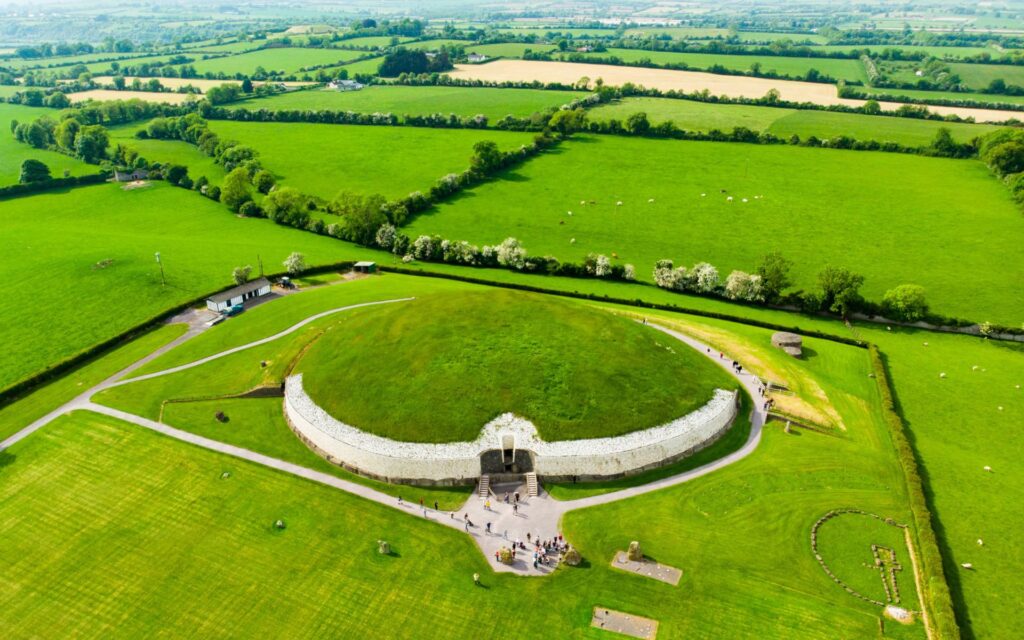New genetic analyses of ancient remains buried in Ireland’s iconic Stone Age tombs are rewriting assumptions about the function of these megalithic monuments.
For centuries, archaeologists believed that these monumental structures, including those at sites like Newgrange and Knowth, were used as royal burial sites reserved for the elite.
However, recent findings challenge this narrative, revealing that the tombs may have served as community centers rather than the exclusive resting places of a dynastic class.
According to a study published by Live Science, the tombs housed individuals with diverse genetic backgrounds, shedding light on the more complex social dynamics of ancient Irish society.
DNA Data Rewrites the Script on Ancient Irish Tombs
A fresh wave of research challenges the long-held belief that Neolithic passage tombs in Ireland—like those at Newgrange, Knowth, and Dowth—served primarily as burial places for Stone Age royalty or elites.
According to a new genetic study published by researchers from Trinity College Dublin, the individuals interred in these tombs were not a monolithic ruling class. Instead, the tombs were dynamic, multigenerational centers with deep community ties.
In an interview with Live Science, study lead author Neil Carlin, an archaeologist at University College Dublin, explained that their findings suggest a major shift from earlier assumptions.
We cannot say that these tombs were the final resting places of a dynastic lineage who restricted access to ‘burial’ within these tombs to their relatives – Carlin said.
The study analyzed DNA from 55 skeletons, all dating back about 5,000 years, which suggests that the tombs were not reserved for a ruling class but were instead used by larger, more interconnected communities.
Communities Over Kings : Who Really Got Buried Here?
The research provides a detailed look into the Neolithic period, specifically between 3900 and 2500 B.C., when megalithic monuments became widespread in Ireland. These tombs, including famous ones like Newgrange, were not designed for a few select families or individuals of elite status.

Instead, the DNA evidence shows that those buried in the tombs were genetically diverse, with no clear evidence of close familial ties between them.
Carlin added,
We argue that this reflects how the kin groups using these tombs were interacting on a larger scale and more frequently choosing to have children with others from within these extended communities.
This suggests that, rather than being places of exclusion, these Stone Age tombs were more likely locations where different groups of people came together for seasonal gatherings, rituals, and communal activities.
Inside the Tombs : Ancestry, Access, and Ancient Rituals
The DNA data not only challenges the notion of a royal elite but also provides valuable insights into the social structure of Neolithic Ireland. The study’s findings show that in the earlier Neolithic, simpler burial practices were common, and the genetic relationships between individuals buried together were much closer.
However, in the later Neolithic, when passage tombs like those at Newgrange began to emerge, the genetic ties among individuals were far more distant, pointing to the larger, more diverse communities that used these monumental tombs.
The shift in burial practices coincides with what researchers believe was a change in kinship patterns. Carlin explains,
We need more ancient DNA samples and deeper analysis of key sites,
Highlighting the need for further research to fully understand the complex social dynamics of this period.
Public Gathering Spaces, Not Private Crypts
These tombs, which are older than Stonehenge and the Egyptian pyramids, were more than just burial sites. Evidence suggests they served as ritual centers where people gathered for feasting, ceremonial events, and seasonal celebrations.
The grand solar alignment of some tombs, like Newgrange, underscores their role in marking important seasonal cycles, like the winter solstice, rather than merely serving as burial grounds for a single ruling class.
The emerging picture is one of shared heritage, where ancestry, myth, and community identity converged. The tombs symbolize a society where kinship was less about dynastic rule and more about communal belonging.
This view of the Neolithic period suggests a more egalitarian society, one in which people from various regions came together to form stronger, more diverse communities.
As the study suggests, more research is needed, but the evidence already points to complex social structures that go beyond the idea of Ireland’s Stone Age as a time ruled by powerful dynasties.

